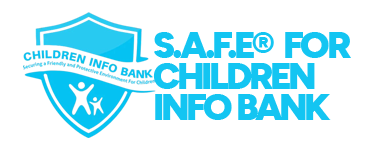The Alarming Rise of Child Trafficking: The Case of Rachael and the Dark Market for Babies

Source: Vanguard Newspaper
Story
The recent case of a 26-year-old woman, Rachael, who sold her two-week-old baby for ₦600,000 in Asaba, Delta State, highlights the growing menace of child trafficking and the dire consequences of having children without financial or emotional preparedness. This incident not only exposes the harsh realities of economic desperation but also underscores the legal and ethical ramifications of this heinous crime. Rachael, a struggling mother of two, was left to fend for herself when the father of her newborn denied responsibility for the pregnancy. Unable to cater to her children’s needs, she was introduced to an intermediary who arranged for the sale of her baby. While she received ₦600,000, the child was later resold for ₦4 million.
The Menace “Child Trafficking”
Child trafficking is a violation of fundamental human rights and exposes victims to extreme dangers, including forced labor, abuse, and exploitation. According to the International Labour Organization (ILO), over 1.2 million children worldwide are forced into labor due to trafficking. Nigerian law explicitly criminalizes the sale of children, with severe penalties for those involved. However, despite these laws, cases like the instant case continue to occur.
The Root Causes
1. Unplanned Parenthood and Lack of Support
One of the key factors contributing to cases like Rachael’s is unplanned and unprepared parenthood. Many young girls become pregnant out of wedlock and find themselves raising children alone, often without financial or emotional support. Due to limited access to family planning education, contraceptives, and social services, they are unable to make informed reproductive decisions. This lack of preparedness increases their vulnerability to exploitation, forcing them into desperate situations where selling a child may seem like the only option.
2. Economic Hardship and Poverty
Nigeria’s economic challenges further compound this crisis. With a high poverty rate, many people struggle to afford basic necessities such as food, shelter, and healthcare. Poverty has pushed many women into desperate decisions, with traffickers capitalizing on their hardship by offering what seems like a quick financial solution.
3. Exploitation in the Child Trafficking Network
Beyond individual desperation, this case highlights the ruthless exploitation within the child trafficking industry. The innocent child, now a victim of trafficking, faces an uncertain future, potentially subjected to abuse, forced labor, or illegal adoption.
The Way Forward: Lessons and Solutions
For Parents: Making Informed Decisions
1. Responsible Parenthood
Parents must be equipped with knowledge about family planning, sex education, and financial preparedness before having children.
2. Seeking Support
Instead of resorting to illegal means, struggling parents should reach out to legal adoption agencies, social welfare organizations, and family support groups for assistance.
3. Understanding the Consequences
Selling a child is not just a financial transaction, it is a crime with severe legal implications and long-term emotional trauma for both parent and child.
For Society: Raising Awareness and Offering Support
1. Community Support
Society plays a vital role in ensuring that single mothers receive adequate support to prevent them from making desperate choices.
2 Education and Awareness Campaigns
More efforts should be made to educate communities about the dangers of child trafficking and illegal adoption.
3. Promoting Responsible Parenthood
Encouraging open discussions about reproductive health, family planning, and parental responsibility can help reduce cases of unplanned pregnancies.
For Government: Strengthening Policies and Social Welfare
1. Stronger Laws and Enforcement
Authorities must intensify efforts to crack down on traffickers and enforce strict penalties for those involved in the sale of children.
2. Improved Social Welfare Programs
The government should provide financial assistance, shelter, and vocational training for struggling parents.
3. Access to Family Planning Services
Expanding access to contraceptives, reproductive health education, and counseling services can help reduce unplanned pregnancies.
Conclusion
This case is a tragic reflection of deep-rooted economic struggles and lack of social support. It is a wake-up call for government agencies, communities, and individuals to take urgent action to address the root causes of child trafficking





